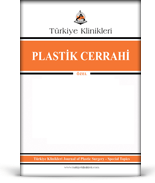Diffenbach ve Unger tarafından 1822'de başlatılan saç ekimiyle alopesi tedavisi, onlarca yıl boyunca birkaç olguyla sınırlı kalmıştır. 19. yüzyıl boyunca daha çok topikal veya oral ilaç kullanımlarıyla alopesi problemi giderilmeye çalışılırken, yüzyılın sonlarına doğru travmatik alopesilerde saçlı deri greftleri veya flepleri kullanılarak yapılan tedaviler yaygınlık kazanmıştır.
Saç ekiminde kullanılan modern cerrahi teknikler, 1939'da Okuda ve 1943'de Tamura tarafından geliştirilse de, İkinci Dünya Savaşı bitene dek Japonya dışında dikkatleri çekmemiştir.
Saç ekimi; 1959'da Orentreich'in androgenetik alopesi tedavisi yaptığı olgu serisini ve saç ekiminin fizyolojik temellerini oluşturan 'donör baskınlığı' ve 'alıcı baskınlığı' kavramlarını ortaya koyduğu yayınıyla modern şeklini almıştır.
Sonrasında tekniklerin gelişimiyle minigreftler (3 ila 5 kıl taşıyan) (1984) ve mikrogreftlerin (1 ila 3 kıl taşıyan) (1995) kullanımı yaygınlık kazanmış ve bu greftlerin, elde edilen deneyimler ışığında uygun olarak yerleştirilmeleriyle olgularda son derece doğal görünümlü sonuçlar elde edilmeye başlanmıştır.
Foliküler ünite transplantasyonu (FUT) 2000'lere kadar elde edilen sonuçları nedeniyle saç restorasyonu için'altın standart' hâline gelmiş olsa da, 2002'de foliküler ünite ekstraksiyonu (FUE) yönteminin ortaya çıkmasıyla popülerliğini kısmen kaybetmiştir. Robot kullanımıyla FUE yapılması ve alıcı yatağın oluşturulması da FUE tekniğinin daha rafine hâle gelmesini sağlamıştır.
Flep fizyolojisinin anlaşılmasıyla saçlı fleplerin saçsız alanları örtmek için kullanılması, doku genişleticilerin kullanımıyla saçsız alanların rekonstrüksiyonu ve skalp redüksiyonu yöntemleriyle saçsız alanların küçültülmesinin sağlanması da saçsız alanların tedavisinde elimizi güçlendiren seçenekleri oluşturmuştur.
Saç köklerinde kök hücreler ve dermal papilla hücrelerinin bulunması, saçların klonlaması ve klonlanan saçların ekimi seçeneğini ortaya çıkarsa da yapılan çalışmalar henüz başarılı sonuçlar vermemiştir.
Yapılan çalışmalarla kök hücrelerinin istenilen kök hücresine dönüşmesini sağlayacak ortamlarda muamele edilip enjekte edilmeleri yoluyla saçsız alanların saçlı hâle getirilebilmesi, önümüzdeki yılların en heyecan verici gelişmesi olacaktır diye düşünüyor ve ülkemizdeki araştırıcıların bu konuya eğilmek isteyeceklerini umuyorum.
Günümüzde, ülkemizde de oldukça büyük sayılarda yapılan saç ekimini anlatan bu kitabı hazırlarken; saç histopatolojisinden başlayarak saçlı bölgelerin anatomik nirengi noktaları, alopesi sınıflaması, cinsiyete göre saç kaybının medikal ve cerrahi tedavisi, cerrahi öncesi planlama ve seçilecek onarım yöntemleri ve özellikli bölgelere saç ekimi konularına değinip, ekim sonrası bakım ve gelişebilecek komplikasyonların yönetimi konularına ağırlık verdik.
Bu kitabın hazırlanmasında emeği geçen tüm bölüm yazarlarına ve organizasyonunu yapan Türkiye Klinikleri'ne teşekkür ediyorum. Ortaya konulan bu kitabın, konuyla ilgilenen tüm meslektaşlarımıza yararlı bir kaynak olmasını diliyorum.
Prof. Dr. Selma SÖNMEZ ERGÜN
Editör
The treatment of alopecia with hair transplantation, initiated by Diffenbach and Unger in 1822, has been limited to a few cases for decades. While the problem of alopecia was tried to be solved with the use of topical or oral drugs during the 19th century, towards the end of the century, treatments using scalp grafts or flaps became widespread in traumatic alopecia.
Although modern surgical techniques used in hair transplantation were developed by Okuda in 1939 and Tamura in 1943, they did not attract attention outside of Japan until the end of the Second World War.
Hair transplantation took its modern form in 1959, with Orentreich's publication which included the case series in which he treated androgenetic alopecia and put forward the concepts of "donor dominance" and "recipient dominance" that form the physiological basis of hair transplantation.
Subsequently, with the development of new techniques, the use of minigrafts (carrying 3 to 5 hair follicles) (1984) and micrografts (carrying 1 to 3 hair follicles) (1995) has become widespread, and with the appropriate placement of these grafts in the light of experience, extremely natural looking results have begun to be obtained in cases.
Although follicular unit transplantation (FUT) has become the "gold standard" for hair restoration due to its results until 2000s, it has partially lost its popularity with the introduction of the follicular unit extraction (FUE) method in 2002. FUE with the use of robots and the preparation of the recipient site also enabled the FUE technique to become more refined.
With the understanding of flap physiology, the use of hairy flaps to cover balding areas, the reconstruction of balding areas with the use of tissue expanders and the reduction of balding areas with scalp reduction methods have also created options that strengthen our arsenal in the treatment of balding areas.
Although the presence of stem cells and dermal papilla cells in hair follicles reveals the option of cloning hair and transplantation of cloned hair, studies have not yet yielded successful results.
I think that the most exciting development of the coming years will be the treatment of hairless areas by injecting stem cells treated with mediums that turn them into the desired stem cells, and I hope that researchers in our country will want to focus on this issue.
While preparing this issue about hair transplantation, which is performed widespread in our country, we tried to focus on an extensive range of topics starting from hair histopathology, to anatomical landmarks of the hairy regions, alopecia classification, medical and surgical treatment of hair loss according to gender, pre-surgical planning and repair methods to be utilized, and hair transplantation in specific areas, and posttransplantation care and the management of complications that may develop.
I want to thank all the authors and Türkiye Klinikleri for their efforts in preparing this book. I hope this book will be a useful resource for all of our colleagues who are interested in the subject.
Prof. Dr. Selma SÖNMEZ ERGÜN
Editor







.: Process List